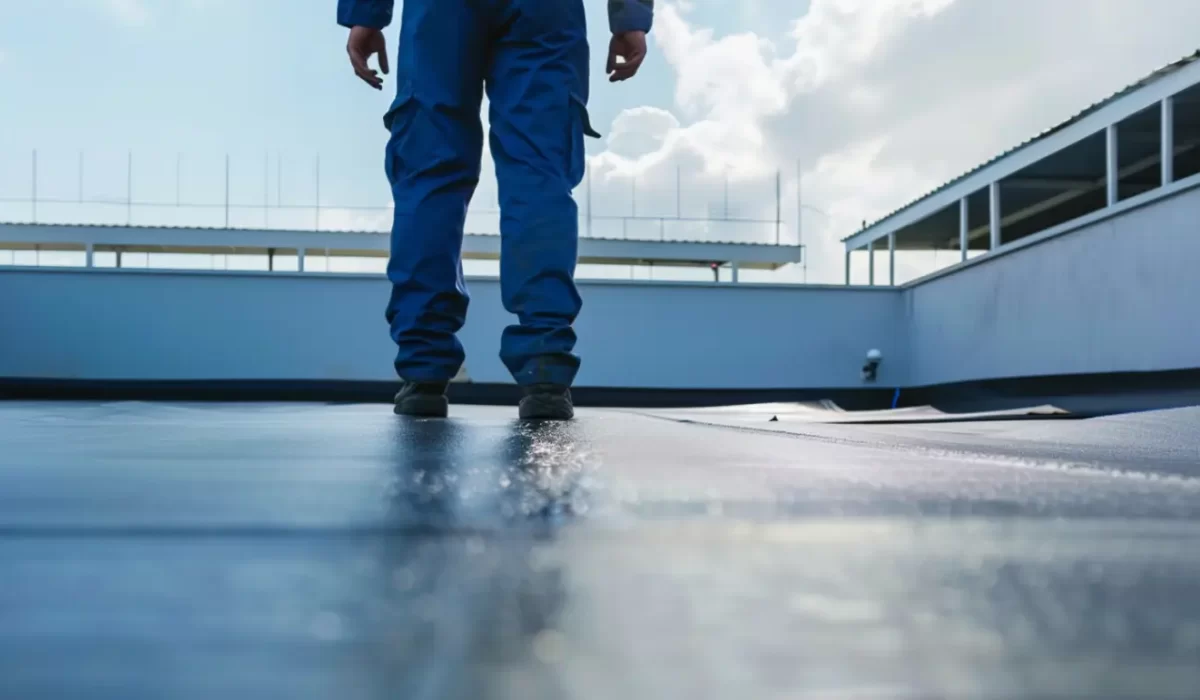In the competitive world of multifamily property management, routine roof inspections are a strategic way to protect your investment and reduce repair costs. Regular maintenance by trusted professionals like Fontaine Roofing ensures that minor issues are identified before they become expensive problems. For shared complexes in Anaheim, CA proactive roofing assessments help property owners avoid unplanned expenses and keep the entire building operating smoothly. Well-timed inspections not only extend the life of commercial roofing systems but also safeguard the comfort and safety of all residents.
Why Routine Roof Inspections Matter for Shared Complexes
Managing roofing systems in shared complexes requires regular inspections, not just repairs. Property managers prioritizing preventative maintenance can better handle Southern California’s unpredictable weather and water intrusion. Routine inspections preserve structural integrity, minimize tenant disruptions, and maintain property value.
We are certified as a GAF Master Elite Contractor, CertainTeed Shingle Master, and Polyglass Preferred Contractor. Our approvals for FiberTite and IB Roofing Systems, along with TRI certification, highlight our commitment to quality. Memberships in CACM, CAI, and NRCA underscore our dedication to industry standards and exceptional service for shared complexes.
Contact Us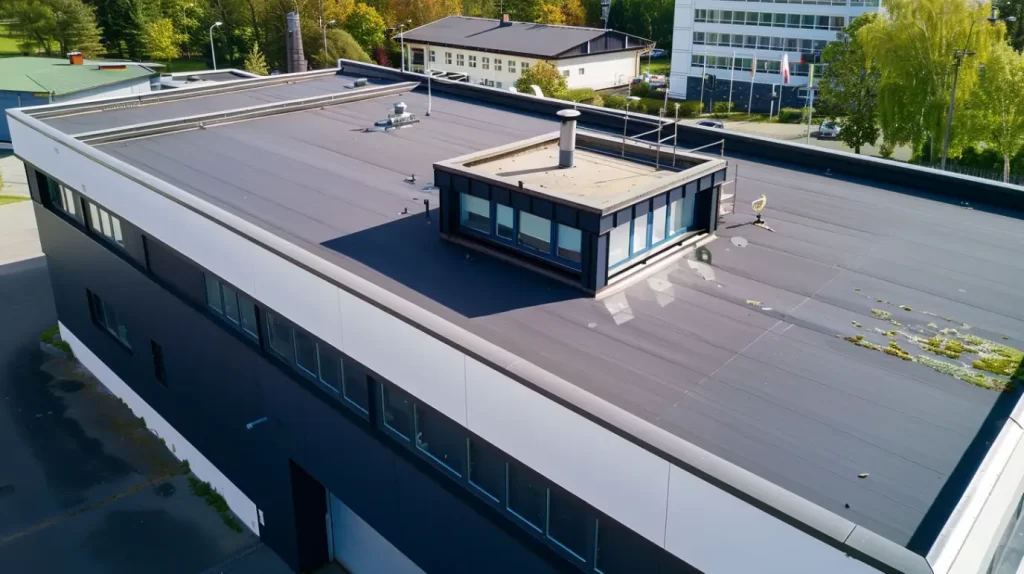
Unique Challenges in Multifamily and Shared Residential Roofing
Multifamily and shared residential roofing poses unique challenges beyond standard maintenance. With multiple units depending on a single system, tenant interdependency complicates repair and inspection decisions. Varying tenant schedules can disrupt routine inspections, complicating proactive maintenance.
Environmental factors, such as local weather, can affect the structural integrity of roofing systems differently across units. Damage in one area may go unnoticed, leading to costly issues like water intrusion. Property managers must prioritize communication with residents to address potential problems quickly, ensuring the longevity and safety of roofing systems while preserving property value.
Impact of Regular Inspections on Long-Term Cost Savings
Regular inspections significantly benefit property managers by enabling early detection of issues like loose flashing or drainage failures. This allows for preventative maintenance, reducing long-term repair costs and preventing emergencies.
Cost savings extend beyond repairs; routine evaluations optimize budgets, facilitate planned repairs, and extend the roof’s lifespan while minimizing the need for complete replacements.
Properties with regular inspections face fewer unexpected costs and enjoy improved energy efficiency. Fontaine Roofing’s certified team collaborates with GAF, CertainTeed, and Polyglass to deliver tailored, high-quality solutions in Anaheim, CA, maximizing cost savings and enhancing property value.
Safety and Liability Reduction through Proactive Maintenance
Proactive maintenance is essential for safety and liability reduction in multifamily and shared roofing systems. Regular inspections help property owners spot minor issues before they escalate, enabling early detection of hazards like water intrusion or structural damage, which can lead to costly repairs and insurance claims.
A well-maintained roof protects residents and shields property managers from negligence lawsuits. Implementing a preventative maintenance program ensures compliance with insurance requirements and preserves structural integrity. This approach provides peace of mind for owners and occupants, leading to long-term cost savings and increased property value.
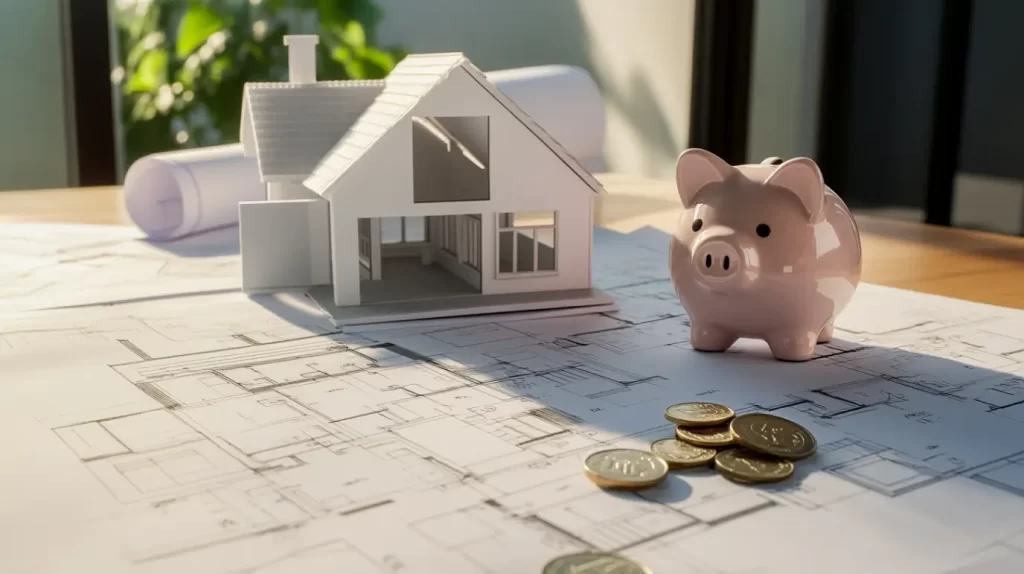
Main Cost Benefits of Routine Roof Inspections
The financial advantages of routine roof inspections are clear. By identifying problems early, property managers sidestep expensive emergency repairs and control repair costs over the long run. Regular inspections promote energy efficiency by keeping roofing systems intact and well-sealed, reducing monthly energy bills.
Early detection ensures that minor repairs are addressed before they escalate into major problems, preserving the life of your roof and supporting stable property values. Next, we’ll cover how these routine assessments prevent costly emergencies and maximize total savings.
Preventing Expensive Emergency Repairs
Routine inspections are crucial for spotting minor roof issues before they lead to costly repairs, protecting property owners from emergencies. Early detection of leaks or missing shingles lowers repair costs and extends the roof’s lifespan. Regular maintenance prevents small leaks from causing major structural damage and increasing insurance claims. A proactive approach enables property managers to monitor environmental factors like heavy rain or severe weather, allowing for timely interventions. By addressing minor problems quickly, shared complexes can avoid disruptions and financial strain from emergency repairs, preserving property value and enhancing energy efficiency.
Maximizing Roof Lifespan and Reducing Total Replacement Costs
A proactive approach to routine roof inspections can significantly extend the lifespan of roofing systems in multifamily and shared residential buildings. By identifying minor issues, such as missing shingles or small leaks early, property managers can prioritize preventative maintenance and prevent major defects. This upkeep preserves both roof integrity and property value.
Regular inspections also inform property owners about environmental factors affecting their roofs, enabling timely repairs. This strategic oversight minimizes unexpected expenses from major repairs or replacements, leading to significant long-term savings. Therefore, regular evaluations are crucial for maximizing lifespan and reducing financial impacts.
Enhancing Property Value and Tenant Satisfaction
Regular roof inspections protect structures and enhance property value and tenant satisfaction. Well-maintained roofs boost curb appeal and resale value, attracting potential tenants and buyers. Timely maintenance increases tenant retention and positive reviews.
Property managers can justify routine inspections to homeowners’ associations by highlighting cost savings, fewer emergency calls, and increased property value. Fontaine Roofing’s thorough documentation simplifies communication of these benefits to stakeholders. Routine maintenance ensures peace of mind and long-term financial stability for multifamily complexes.
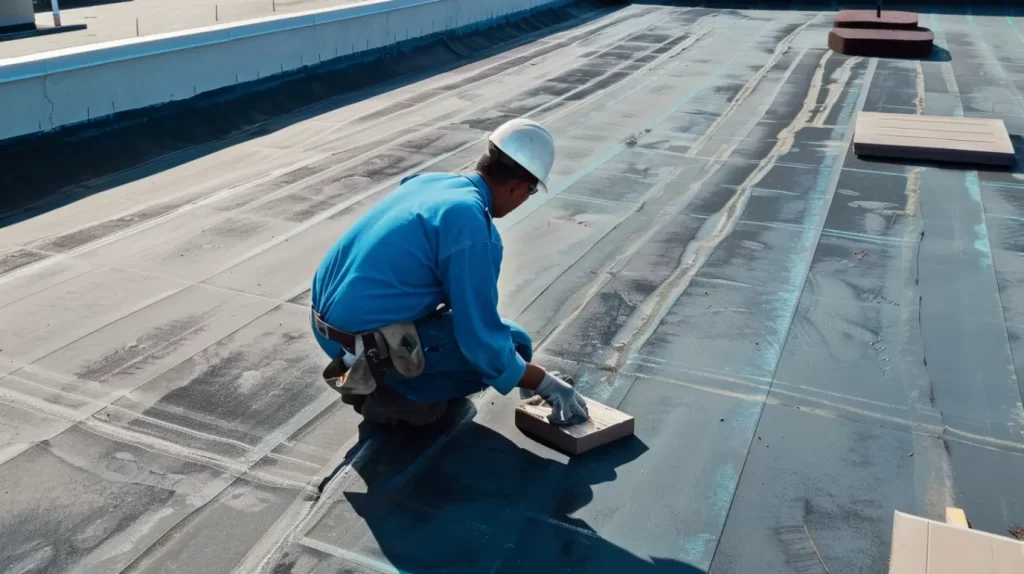
Common Roofing Issues Detected Early During Inspections
Early detection of roofing issues is a cornerstone of successful property management. Regular inspections allow professionals to uncover potential problems such as water damage, membrane failures, and weather-related deterioration before costly repairs are necessary. Identifying these issues promptly keeps repair costs low and supports the overall health of the building.
Let’s examine the most frequent concerns found during routine roof inspections and how resolving them early saves money for property managers and HOAs.
Water Intrusion, Leakage, and Drainage Problems
Early identification of water intrusion is vital, as it can lead to significant structural issues. Regular roof inspections allow roofing contractors to spot minor leaks and drainage problems. By evaluating drainage systems, property managers can ensure proper water diversion, preserving the roof’s lifespan.
Neglecting these small issues can lead to costly major repairs and impact property value. Extreme weather can worsen these problems, making proactive maintenance essential for reducing mold growth and water damage risks. Timely inspections provide peace of mind, ensuring shared residential complexes remain safe and structurally sound for all residents.
Membrane, Flashing, and Sealant Failures
Failures in membranes, flashing, and sealants can compromise the integrity of shared residential roofs. These elements are essential for preventing water intrusion and protecting against environmental factors. Over time, wear can lead to leaks and costly repairs if not addressed promptly. Regular inspections enable early detection of minor issues, preserving your roof’s lifespan.
Neglecting maintenance may result in mold growth and extensive damage, risking property value. Proactive inspections offer peace of mind to property owners and mitigate liability concerns, ensuring quality workmanship. Awareness of these vulnerabilities is crucial to avoid unexpected expenses later on.
Signs of Aging and Weather-Related Damage
Monitoring a roof’s condition is crucial for multifamily or shared residential properties. Issues like cracked shingles, curled edges, or missing pieces can signal aging or weather damage. If ignored, these minor signs can lead to major problems.
Regular inspections help catch potential issues early, preventing severe water intrusion and mold growth that threaten the building’s integrity. Weather damage can also reduce insulation efficiency, raising energy costs. Water stains inside units and sagging rooflines are warning signs that require immediate attention. Addressing these indicators proactively can save property owners from costly repairs later on.
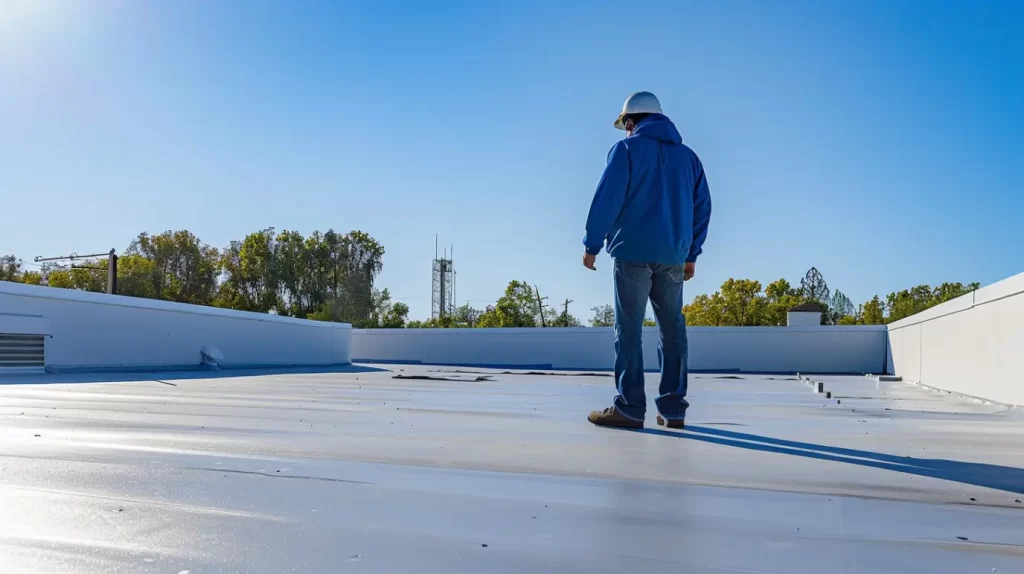
How Often to Schedule Roof Inspections in Shared Complexes
Establishing a consistent inspection schedule is critical for shared complexes. Regular maintenance prevents minor issues from escalating and ensures property managers can predict and control repair costs over time. Routine inspections—tailored to roof type and local climate—keep your building’s roofing system prepared for severe weather and everyday wear.
Now, let’s explore recommended frequencies and strategies for effective inspections and timely maintenance.
Recommended Frequency Based on Roof Type and Local Climate
Understanding the characteristics of different roofing systems and local climate factors is crucial for determining inspection frequency. For example, flat and metal roofs may need inspections every six months due to water intrusion and debris buildup, especially in heavy rainfall regions. In contrast, sloped roofs can be inspected annually unless significant weather events raise structural concerns.
Local climate significantly influences inspection needs; areas with extreme weather should consider quarterly inspections. By adjusting schedules based on these factors, property managers can prevent minor issues from becoming major problems, extending roof lifespan and ensuring a thorough maintenance strategy.
Seasonal and Post-Storm Inspection Strategies
Seasonal inspections, especially after severe weather, are essential for maintaining roofing systems in shared complexes. Regular checks during transitional seasons can identify issues caused by temperature changes and environmental factors. For example, heavy rainfall or snow can worsen minor problems, risking significant damage if ignored.
Post-storm inspections are equally crucial for early detection of issues like missing shingles or drainage problems. Timely intervention not only extends your roof’s lifespan but also prevents costly repairs. Property managers should establish thorough inspection protocols to ensure quality workmanship and protect property value from unexpected expenses.
Adapting Inspection Schedules for HOA and Property Manager Needs
Customizing inspection schedules for homeowners associations (HOAs) and property managers is essential for effective roof maintenance. Factors like environmental impacts and roof lifespan necessitate timely inspections to detect potential issues early. This proactive approach helps address minor problems before they become costly repairs, protecting investments and enhancing property value.
Additionally, aligning inspections with seasonal changes and local weather patterns ensures compliance with insurance requirements and maintains structural integrity. Tailored schedules promote efficient resource allocation for planned maintenance throughout the year, leading to substantial cost savings and peace of mind for all stakeholders.
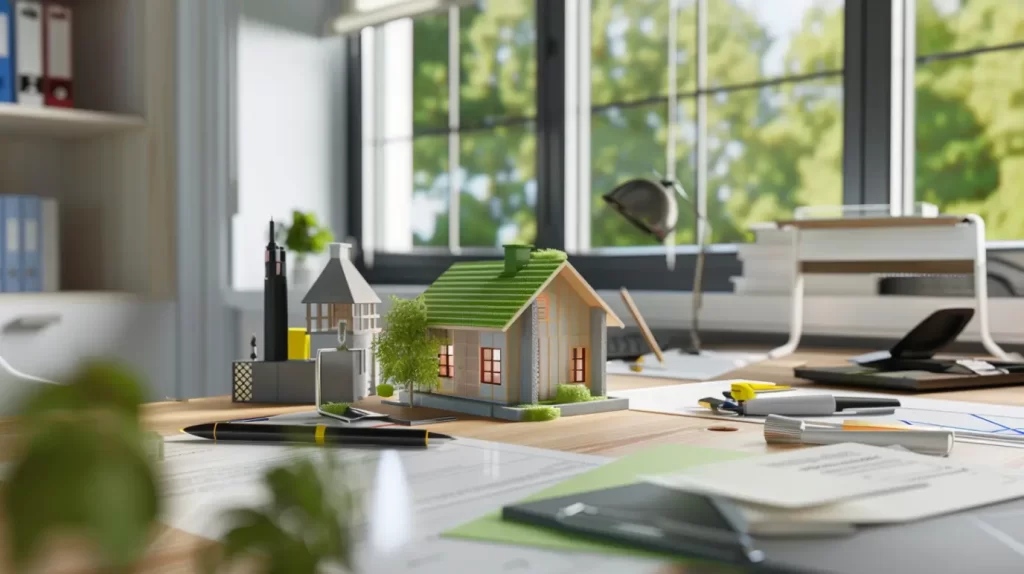
Building a Routine Roof Inspection Program
Developing a formal roof inspection program is the foundation of successful preventive maintenance in shared complexes. Fontaine Roofing’s award-winning process combines routine inspections, quality workmanship, and tailored solutions for Anaheim, CA property managers. Implementing a maintenance timetable and a comprehensive checklist safeguards every aspect of the roofing system, protecting your investment for years to come.
Let’s break down how to set up an effective inspection program and streamline documentation for shared properties.
Creating a Comprehensive Roof Inspection Checklist
A thorough roof inspection checklist ensures nothing is overlooked. Begin by evaluating the overall condition, noting signs of wear like missing shingles, water stains, and structural damage. Document findings and focus on drainage systems, as clogs can lead to water intrusion and mold.
Include environmental factors, such as weather impacts on roof integrity. Regular inspections help address minor issues before they escalate into costly repairs. A systematic checklist enables property managers to maintain quality workmanship, extend the roof’s lifespan, and achieve peace of mind while saving costs.
Trust the Experts
Routine roof inspections are essential for property managers and owners in shared complexes. Companies like Fontaine Roofing in Anaheim, CA, highlight their importance in ensuring roofing longevity and preventing costly repairs. A proactive approach allows early issue detection, minimizing severe weather impacts and large insurance claims. Regular inspections enhance structural integrity, energy efficiency, and property value. Partnering with a trusted company like Fontaine Roofing ensures minor issues are addressed before they escalate, protecting financial resources and extending roof lifespan against unpredictable weather.
Read our blog: Eco-Friendly Roofing Systems for Multi-Family Properties
Frequently Asked Questions
How can property managers justify inspection costs to HOAs or boards?
Property managers can justify inspection costs by highlighting the substantial cost savings, preventative maintenance benefits, and reduced risk of extensive damage. Routine inspections also enhance property value and provide peace of mind for homeowners associations, supporting long-term investment protection and tenant satisfaction.
Does the HOA pay for roof replacement?
In most shared complexes, the homeowners association is responsible for roof replacement, especially where insurance requirements and shared property rules apply. Major repairs are typically a collective expense, ensuring the structural integrity and value of the entire building remains protected.

